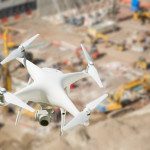News - Construction News
Intelligent building: What ConTech trends are coming down the track in 2023?

Construction is going digital, and the pace of adoption shows no signs of faltering in 2023. In fact, with so many cutting-edge innovations coming forward to support construction professionals, this year’s likely to see even greater uptake of the latest tech, according to David Mitchell, Founder & CEO, XYZ Reality.
For instance, constantly evolving cloud platforms are enabling greater collaborative design in the planning stage. Simultaneously, at the hard-edge of specification, BIM software is constantly evolving and has catapulted the construction industry into a new age. This is evidenced in the latest digital twin technology which is revolutionising how structures are built, achieving accurate 4D-models to inform decisions during the whole asset lifecycle.

Dave Mitchell
However, it’s augmented reality (AR), machine learning (ML) and computer vision (CV) which make me the most excited for the year ahead, which is going to see onsite accuracy and build quality taken to the next level. So, as 2023 gets underway, let’s take a look at how these digital solutions are going to help contractors work better, smarter, and more efficiently.
AR capabilities to advance further in 2023
AR is already a key disruptor in global construction, but this year will see it go even further, building on the versatile applications of BIM. According to recent industry analysis[1], the global AR market was estimated to be around $25bn in 2021 and will expand at a compound annual growth rate of 40.9%, with our sector being a major driver of this growth.
It’s already being used by some of the most forward-thinking contractors in the sector, mainly to alleviate pressure from material and labour shortages and decrease emissions in construction by eliminating costly rework. Others are starting to sit up and take notice, particularly when margins are becoming tighter than ever and every penny counts.
Crucially, AR-enabled tools empower field engineers to build more efficiently by comparing 3D models against real-world structures to detect and prevent errors in real-time. Boosting productivity by as much as 40% on projects, it’s no surprise uptake is on the rise.
AI and ML speed up processes and improve automation
Artificial intelligence (AI) is also changing the rules of the game. With a primary focus on analytics and automating tasks, it’s helping construction professionals interpret data to inform future work and speed up design processes.
Machine learning (ML) is starting to take off, providing a way to mimic human actions and thought processes, such as problem solving and pattern recognition, to automate tasks. ML offers another way to monitor work progress and assess operational risks, warning site managers of any defects or hazards that may hinder work on a project.
Making Computer Vision more established and increasing its construction uses
Computer Vision, another member of the AI family, is likely to become more mainstream in modern construction over the course of the year. Instead of learning from data, CV allows computers to obtain valuable information from images and videos. Based on this, it can make recommendations and even take action where necessary. Think of it as the eyes of a computer where AI controls its thought process.
CV improves the safety and security of construction areas and can also be used to monitor the efficiency of activities. The cameras take images of a site and then use algorithms from their machine learning counterpart to identify zones in an image then use this data to identify risks and procedural inefficiency. This information is fed back to the user to help inform their decisions.
Construction will continue to onboard digitalisation
Finally, I’d like to circle-back to digital twins, yet another maturing technology to watch in the year ahead. This cutting-edge technology amplifies AI’s potential by using smart sensors to generate virtual twins of structures in real-time and autonomously update them to register any changes. These dynamic models build on contemporary asset management methods and provide a continuous, accurate stream of data about structures.
Inevitably, we will see even more screens on construction sites over the next 12 months, with workers accessing digitally-enabled hardware linked to offsite teams. Long gone are the days of relying on pen and paper!
It’s only the beginning. 2023 is going to be an exciting year for the industry, and the latest technologies will transform operations for a more efficient, digital future. The next chapter in the construction industry is just around the corner and only the most digitally-savvy industry leaders will succeed.
[1] https://www.grandviewresearch.com/industry-analysis/augmented-reality-market
If you would like to read more stories like this, then please click here
Related Articles
More News
- £8Bn to be invested in flood defences over the next decade
27 Jun 25
A record £7.9Bn over ten years has been committed to flood defences.
- Boosting British jobs and skills key for firms to win major infrastructure projects
26 Jun 25
Creating high quality British jobs and boosting skills in local communities will be key requirements
- Major rail supply deal to protect thousands of British Steel jobs
25 Jun 25
Thousands of British manufacturing jobs have been secured as the Transport Secretary finalises a major






